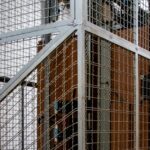For anyone responsible for keeping multi-story buildings moving—whether you’re a developer, property manager, consultant, or operational leader—the hard reality is that elevator downtime and excessive maintenance costs aren’t just headaches; they’re real threats to tenant satisfaction, operating budgets, code compliance, and even property value. At Kaiser Elevator, we’ve seen a quiet revolution in how these problems are tackled, thanks to the rise of smart elevator technologies. Let’s explore how these innovations are truly reshaping the economics, reliability, and user experience of vertical transportation in modern properties like those throughout New York City and beyond.

Why Traditional Elevator Maintenance Keeps Costs High
We’re all familiar with the classic elevator service contract: rigid monthly or quarterly checks, scheduled no matter the true condition of your assets. Technicians show up, run basic inspections, lubricate the usual parts, and (nine times out of ten) find little to do. But this model overlooks the key pain points of modern facility management:
- Unpredictable failures that still slip through, resulting in more costly emergency visits and unexpected downtime
- Service calls performed when there’s nothing wrong, driving up wasted labor
- Lack of detailed insight into elevator health between visits, making trend analysis and portfolio planning nearly impossible
For high-traffic commercial, residential, and institutional buildings, these inefficiencies can quietly add tens of thousands of dollars in annual operating costs—in addition to the reputational risks of service disruptions.
How Smart Elevator Systems Flip the Equation
With the integration of digital sensors, predictive software, and remote monitoring platforms, elevators can now tell us when they truly need attention. Here’s how smart system upgrades change the landscape for owners and operators:
- Continuous condition monitoring: IoT sensors track variables like motor temperature, vibration, door cycle times, and fault codes around the clock. This provides a live snapshot of your fleet’s health—even across multiple properties.
- Intelligent alerts: When parameters drift outside safe or optimal ranges, the system generates instant notifications. No more waiting for a scheduled visit to spot a failing door operator or sluggish leveling.
- Remote diagnostics: In many cases, maintenance teams can diagnose (and sometimes resolve) issues remotely. This means fewer truck rolls, shorter downtimes, and sharper labor targeting for complex problems.
- Predictive analytics: By learning from live and historical data, smart platforms spot patterns—think a relay that’s trending toward failure or a shaft component starting to show excess friction—weeks before these become show-stopping faults.

The Bottom-Line Impact: Real Maintenance Cost Reductions
At Kaiser Elevator, we work with asset owners who are often shocked by how quickly the numbers add up with smart monitoring and predictive maintenance integration. While every building’s savings will vary, here’s what our New York City multi-family and commercial clients typically see:
- Fewer unnecessary service visits: With analytics-driven scheduling, we cut out 25-40% of planned visits that reveal no actionable problems. This translates directly to lower contract costs and less operational disruption.
- Dramatically reduced emergency calls: Most unplanned outages stem from undetected trends, such as slow-wearing door controllers or misaligned sensors. Smart platforms diagnose these early, so teams can schedule swaps during off-hours—not at 11:00 AM when your building is at peak demand.
- Lower part replacement and labor costs: By intervening only when wear is identified—not on a timetable—we reduce the risk of major component failures and extend the lifespan of expensive subsystems.
- Energy consumption gains: Many smart upgrades include regenerative drive systems and energy optimization modes that reduce elevator energy usage by up to 30%, especially in high-traffic settings.
For large portfolios, these cumulative savings can be in the tens (or even hundreds) of thousands of dollars annually.
Minimizing Downtime: What It Means for Your Building and Your Stakeholders
Downtime is more than an inconvenience; in sectors like healthcare, hospitality, or high-rise residential, it can directly impact tenant comfort, regulatory compliance, and business operations. Smart elevators proactively protect uptime by:
- Triggering immediate maintenance dispatch upon warning fault detection, not just after a user calls it in
- Allowing for remote resets and interventions when possible, slashing disruptions
- Providing analytics that help us isolate chronic issues, system bottlenecks, or code non-compliance risks
- Improving transparency for owners, facility managers, and even front desk staff—so updates are always based on real data, not guesswork

The Compliance and Lifecycle Dividends of Smart Elevators
A big advantage for owners and property managers in cities like New York (where inspection regimes are strict and unplanned outages can mean fines) is automated record-keeping. Smart elevator systems log every event, alert, and intervention. This supports:
- Easier and more transparent inspections (all event data and maintenance logs in one place)
- Documented compliance history for insurance and regulatory reporting
- Comprehensive trending reports that support capital planning and asset management
- Actionable user ride insights to help improve the overall tenant/visitor experience
Even more importantly, by managing wear in real time and optimizing intervention schedules, these systems help prolong major component lifespans and defer expensive modernizations—another key lever in total cost control.
Putting It Into Action: Our Recommendations for Decision Makers
Upgrading to smart elevator solutions isn’t just for new builds. In our work at Kaiser Elevator, a large share of client wins come from modernizing legacy equipment and integrating IoT components, dashboards, and predictive platforms. Here’s how to start making the change:
- Assess your current fleet. Is your maintenance program too rigid or failing to spot issues in time? Do you lack a centralized view of elevator health?
- Consult an experienced vertical transportation partner. Ask for a tailored smart elevator assessment—we can evaluate your traffic patterns, downtime history, and code exposure, and recommend upgrade paths that fit your operational goals.
- Prioritize predictive and data-driven upgrades in new projects and modernization RFPs. This future-proofs assets and helps you build a stronger business case for every capital dollar spent.
- Use the resulting analytics to inform facility decision-making. Transition your approach from reactive repairs to true lifecycle management, ultimately reducing costs, disruptions, and risk exposure.
Smart Elevator Technology—A Foundation for Resilient, Profitable, and Guest-Focused Buildings
We’ve seen firsthand how even modest investments in smart elevator systems can transform the operational performance and financial trajectory of a building. As property demands rise in complexity, code requirements tighten, and user expectations grow, proactively embracing these solutions is no longer a luxury. It’s a competitive necessity.
If you’re considering upgrades or building new in the New York metro or across the US, our team at Kaiser Elevator can help you rethink your vertical transportation approach—from compliance, system design, and smart integrations to ongoing service contracts that actually deliver ROI.
Ready to discuss your smart elevator vision, or want a detailed site assessment of your existing fleet? Reach out to us—we’re here to ensure your elevators support your business, budget, and reputation for years to come.

